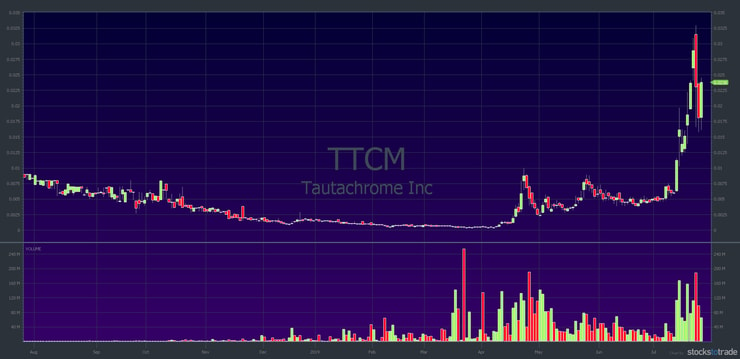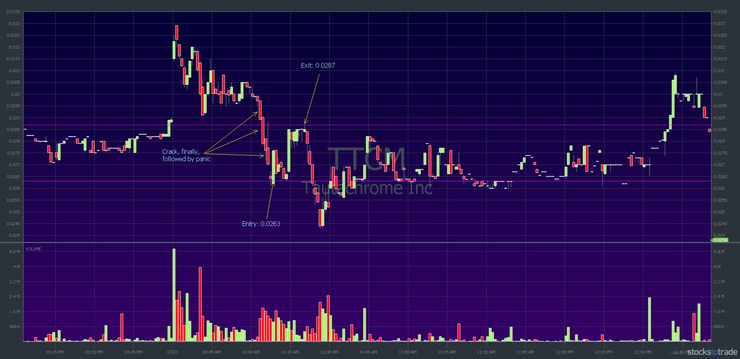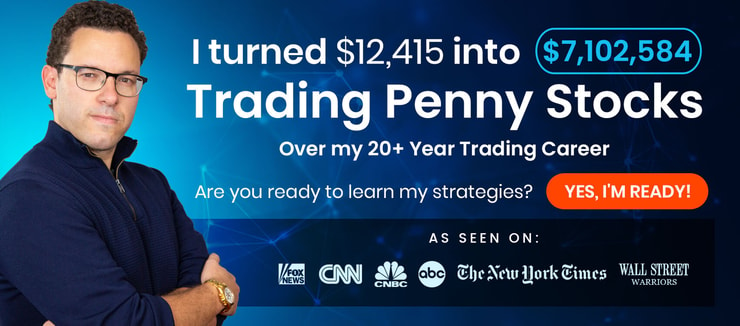What is it about the Midwest?
Several of my top students hail from the Midwest. We’re talking students who’ve earned six and seven figures while using my strategies to trade.*
I recently spent a few days in Michigan with Tim Bohen, Michael Goode, Jack Kellogg, and Dominic Mastromatteo.
If you don’t know, Dom and Jack are two of the top up-and-coming Trading Challenge students. Both are in their early twenties and have made six figures from trading in the last year.*
Keep in mind these are not typical results. These guys put in the time and dedication. They’ve developed exceptional skills and knowledge. Most traders, 90%, lose money. Always remember trading is risky. So, never risk more of your hard-earned money than you can afford.
I’ve been trying to figure out for a long time why this part of the world creates so many great traders. I’ve even joked about it. In the past, I’ve said it’s because there’s nothing for Midwest traders to do but but watch the corn grow. Turns out I was wrong. But we did sit and watch some corn grow … swipe left on the Instagram post below.
I rented a farmhouse for us to stay in. The power went out three times so we had to move to a hotel on the last night. But it was cool. We hung out, played basketball, and had a good time together.

Check out the beautiful sunset. I have to say it was nice to get away from my usual spots in the U.S.
The next pic is from one of our basketball games. Check out Dominic takin’ it to the hoop against Jack.

So, what about the Midwest makes it the ideal place for penny stock traders? As it turns out, it’s deeper than I thought. We think we figured it out and have some good lessons — videos I’ll be releasing soon. Hopefully, you can apply them to your life.
Here’s the gist of it: they have the right mentality. Maybe it’s generations of farm work embedded in their DNA. Whatever it is, they have the right mindset and work ethic. So, it’s not magic but hard work. In my opinion, that means anyone who’s willing to put in the effort and study can do this.
I almost forgot to mention the TradersEXPO in Chicago, July 21–23. Tim Bohen, lead trainer at StocksToTrade.com, and I gave three talks. You can watch an on-demand webcast of our keynote presentation from July 22 by registering here.
Now let’s move on to some trading…
Table of Contents
Trade of the Week
In the last edition of this update, I shared a couple of my Tautachrome, Inc. (OTCPK: TTCM) trades with you.
I want to revisit TTCM in this edition, because I traded it four times between July 12 and July 23. On three of the four trades, I underestimated the upside. I want to share the trade where I finally nailed the top. The irony is that of the four trades this was my smallest profit.
Tautachrome, Inc. (OTCPK: TTCM)
As I explained last time, Tautachrome spiked after a news release announcing its combined blockchain and virtual reality app. I played the initial multi-month breakout with one of my best trades of the year.
Take a look at the 1-year chart again, and notice the two red days at the far right:

First of all, you should know that at the time of writing TTCM is still on my watchlist. It had another first green day on July 25. But the volume has dropped, and I’m not sure how much juice it has without more news.
I hope you’ll go back and reread the last edition. Why? Because it explains my reluctance to go long on a stock once it’s into days three, four, and more after the initial spike. Read the student question about overextended stocks for the answer.
But there’s one major exception…
I LOVE to buy into big morning panics. It’s one of my favorite patterns. Look again at the two red candles on the far right. That kind of sell-off after a multiday run can include a bounce. But it seems like they haven’t been happening as often the last few months.
Now, take a look at the chart showing the crack and bounce:

It was an almost perfect crack, and I was happy to see the morning panic dip buy opportunity. My position size was small compared to my other TTCM trades. Likewise, my goal was only to take 5% to 10% on the play.
As you can see from the chart, it was a nice little bounce. I definitely miss these morning dip buys — solid risk versus reward. But you have to be careful. Don’t get greedy … take the single and forget about the home run.
I timed the top on this trade nearly perfectly, taking a 9.13% win for a profit of $456.* Remember, my results are not typical. I’ve been doing this for two decades. However, I do have 700 videos on morning dip buys … and you can access them as a Trading Challenge student.
Take one more look at the chart and notice the lower bottom and higher top. I wouldn’t have the patience for that move, but some students reported nailing the bottom.
Finally, one of the big lessons from my series of TTCM trades is that you can use different strategies on the same stock. When you watch my PennyStocking Framework Part Deux DVD, it will make more sense. Think of it like this: When a low-priced stock runs, there’s often not only one pattern, but a series of patterns.
As you learn the different patterns and what works best for you…
… you can develop the skills to trade the stock during the different phases of the overall pattern.
Now I want to give some props to some of my students…
Trading Challenge Student Props
I want to give a shout out to all my millionaire and six-figure students. You all make me proud.
When I’ve been outside the U.S. for a while, it’s nice to be home. Above all, it’s great to reconnect. So, I just had the gathering in Michigan, and I also met up with Mark Croock in Miami. It was awesome to see Mark, his wife, and their new baby.
Also, Tim Grittani is a new dad — congratulations to Tim and his wife.
Finally, I just want to say how much I appreciate all my students. Keep working hard, keep studying, and think of this as a marathon, not a sprint. Your continued studies can pay off, but only if you stay dedicated. All my top students put in the time and effort to gain knowledge and develop exceptional skills.
More Breaking News
- BigBear.ai’s Journey in the Stock Market: Rising Trends and Challenges
- Top Bitcoin Stocks to Watch Under “Crypto Emperor Trump”
Let’s move on to a student question…
Trading Challenge Student Question
“Tim, I’ve heard you say ‘Trading is based on a series of rules. When rules start to collapse it’s very damaging to not only your balance but your trading balance.’
Please expand on the idea of balance in relation to trading and breaking rules.”
Yeah. Again, it’s important to remember this is you versus you, OK? It’s NOT you versus the market.
Hot picks can be good, but you need to know when to sell. You need to know when to cut losses.
For example, TTCM tripled from my initial buy. (You can see that trade in the last Millionaire Mentor Update.) But on one recent Rafarma Pharmaceuticals, Inc. (OTCPK: RAFA) trade, I was, frankly, wrong. Rather than hold and hope, I sold into strength and still made money on the trade.
Another recent trade was on Discovery Gold Corporation (OTCPK: DCGD). I was wrong on the second-day breakout. A lot of these second-day breakouts have been failing. But, again, I sold into strength.
So, I made money on TTCM, DCGD, and RAFA because I played safely. I stuck to my own rules. If you don’t play safe — if you don’t err on the side of caution — you can go down with the ship. A lot of these stocks panic quicker than most newbies realize.
I don’t want to be down 20%, 30%, or 40%, wondering what just happened and then holding and hoping. Consequently, sometimes I sell too soon. As a result, I protect myself. Protect, protect, protect.
I definitely think that’s smart for all newbie students and traders. You can get more aggressive later — once you have a big account.
Millionaire Mentor Market Wrap
There you go … another update in the books.
Are you a trader? Comment below and let me know you’re committed to building your knowledge account. Even if you can’t make it, let me know you’re dedicated to the process. I love to hear from all my readers!




Leave a reply